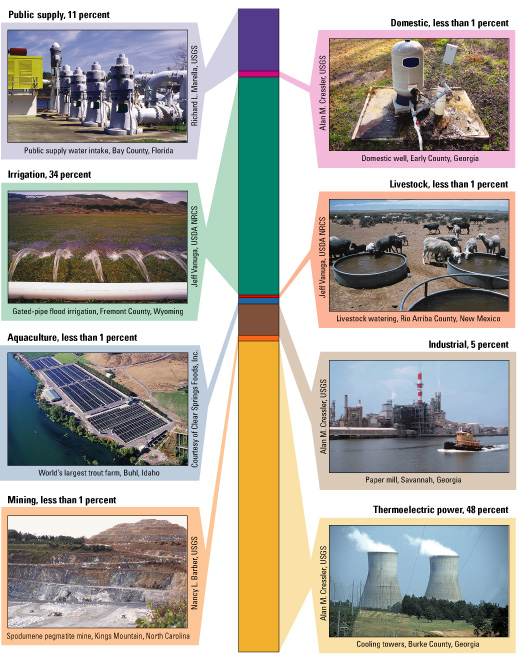The USGS has an interesting summary of water usage in the United States for 2000.
One huge take-away is summarized in this figure from the report: A breakdown of total (fresh + salt) water usage.
- 34% of water is used for agriculture
- 48% of water is used for power generation
- 11% of water is for domestic use
- 5% of water is for industrial use
- 40% is for agriculture
- 39% is for power generation
- 13% is for domestic use
- 5% is for industrial use
- 8% is for domestic use
- 3% is for industrial use
Put another way:
- If you could improve efficiency of agriculture's and power generation's water usage by 23%, that would equal all the water used by domestic and industrial consumers combined.
- It would take less than a 10% improvement in agricultural + power generation water usage to be equivalent to making every home and business in the US maximally water efficient per the LEED v3.0 standard.

No comments:
Post a Comment